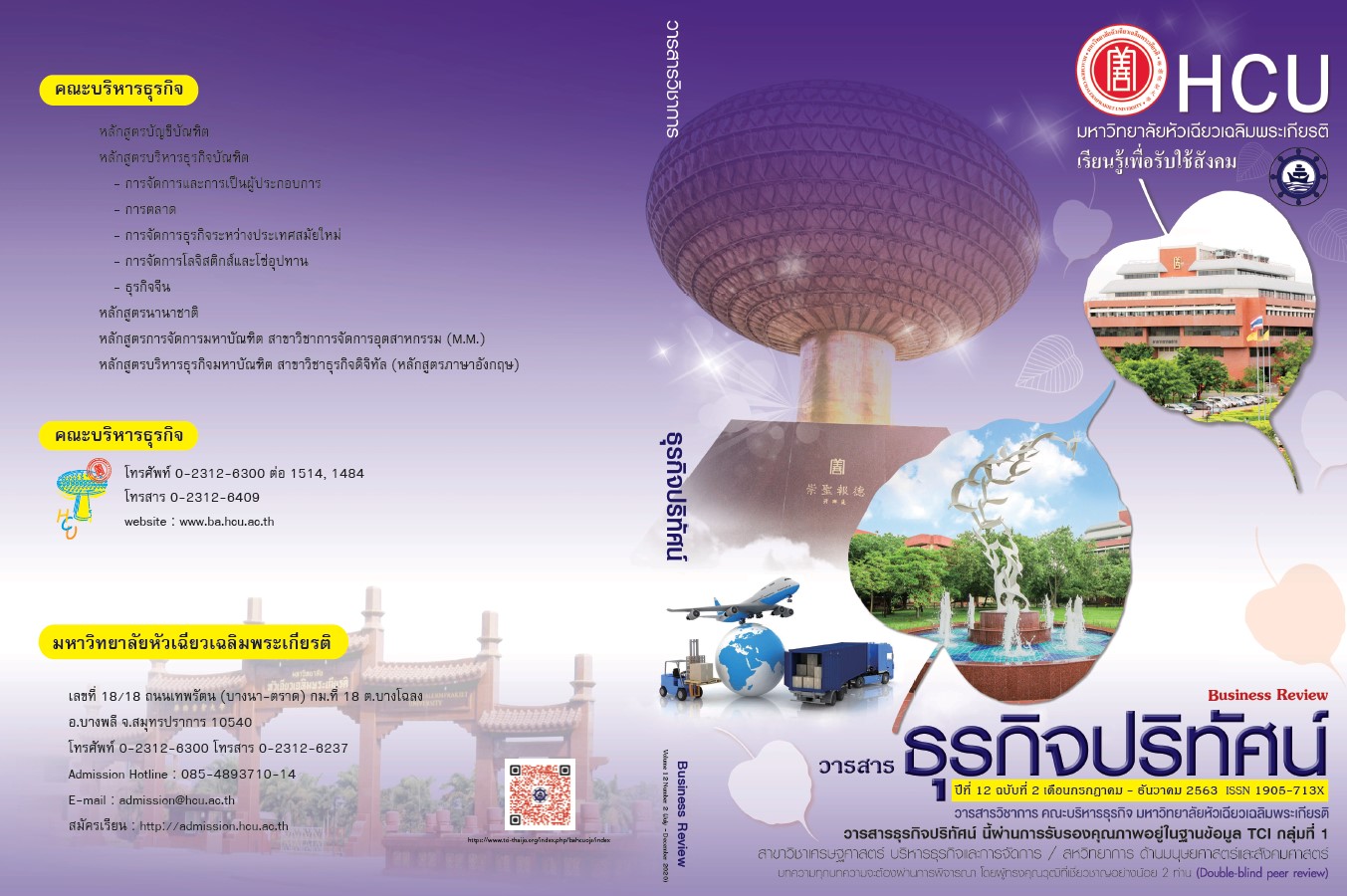Lean Systems Practice on Firm’s Performance
Keywords:
Lean system practices;Firms' performance, Competitive advantageAbstract
Lean system practice is important in the organization's competitive advantages and performance to compete and survive in the world of today. The purpose of this study is to understand the causal relationship between lean practices and firm performance, with competitive advantage proposed as playing the moderating role. A survey was carried out to identify the effects of six lean practices, namely process and equipment, manufacturing planning and control, human resource practices, product design, supplier relations and customer relationship on a firm’s performance, which comprise perception of financial and non-financial measures. The study comprises of 238 observations of Thai companies. The parameters are estimated by ordinary least squares (OLS). The results of this study suggest a negative relationship between lean practices and non-financial performance. Nevertheless, there appears to be a significant positive relationship between competitive advantage and the implementation of lean practices in firms. The scope of the study was limited to companies in Thailand and, therefore, its findings might not be generalizable to other national contexts.
References
Christopher, M., & Holweg, M. (2011). “Supply Chain 2.0”: Managing supply chains in the era of turbulence. International Journal of Physical Distribution & Logistics Management, 41(1), 63-82.
Hair, J. F., Ringle, C. M., & Sarstedt, M. (2012). Partial least squares: the better approach to structural equation modeling? Long Range Planning, 45(5-6), 312-319.
Henao, R., Sarache, W., & Gómez, I. (2018). Lean manufacturing and sustainable performance: Trends and future challenges. Journal of Cleaner Production, 208, 99-116.
Hofer, C., Eroglu, C., & Hofer, A. R. (2012). The effect of lean production on financial performance: The mediating role of inventory leanness. International Journal of Production Economics, 138(2), 242-253.
Hussain, Z., Jusoh, A. B., Sarfraz, M., & Wahla, K. U. R. (2018). Uncovering the Relationship of Supply Chain Management and Firm Performance: Evidence from Textile Sector of Pakistan. Information Management and Business Review, 10(2), 23-29.
Iranmanesh, M., Zailani, S., Hyun, S. S., Ali, M. H., & Kim, K. (2019). Impact of Lean Manufacturing Practices on Firms’ Sustainable Performance: Lean Culture as a Moderator. Sustainability, 11(4), 1112.
Lai, Kee-hung, Wu,Sarah J.& Wong, ChristinaWY. (2013). Did reverse logistics practices hit the triple bottom line of Chinese manufacturers? International Journal of Production Economics, 146(1), 106-117.
Li, S., Ragu-Nathan, B., Ragu-Nathan, T., & Rao, S. S. (2006). The impact of supply chain management practices on competitive advantage and organizational performance. Omega, 34(2), 107-124.
Moyano-Fuentes, J., Sacristán-Díaz, M., & Jose Martinez-Jurado, P. (2012). Cooperation in the supply chain and lean production adoption: evidence from the Spanish automotive industry. International journal of operations & production management, 32(9), 1075-1096.
Narasimhan, R., Narayanan, S., & Srinivasan, R. (2013). An investigation of justice in supply chain relationships and their performance impact. Journal of Operations Management, 31(5), 236-247.
Porter, Michael E. (1989). From competitive advantage to corporate strategy. In Readings in strategic management (pp. 234-255): Springer.
Premkumar, G. P. (2000). Interorganization systems and supply chain management. Information systems management, 17(3), 1-14.
Rondeau, P. J., Vonderembse, M. A., & Ragu-Nathan, T. S. (2000). Exploring work system practices for time-based manufacturers: their impact on competitive capabilities. Journal of Operations Management, 18(5), 509-529.
Sigalas, C., & Papadakis, V. M. (2018). Empirical investigation of relationship patterns between competitive advantage and superior performance. Journal of Strategy and Management, 11(1), 81-111.
Skinner, W. (1985). Manufacturing, The Formidable Competitive Weapon: The Formidable Competitive Weapon: John Wiley & Sons Inc.
Sugimori, Y., Kusunoki, K., Cho, F., & Uchikawa, S. (1977). Toyota production system and kanban system materialization of just-in-time and respect-for-human system. The International Journal of Production Research, 15(6), 553-564.
Tiwari, S., & Tripathi, N. (2012). Lean Manufacturing Practices and Firms Performance Measurement--A Review Paper. Journal of Supply Chain Management Systems, 1(1), 44.
White, H. (1980). A heteroskedasticity-consistent covariance matrix estimator and a direct test for heteroskedasticity. econometrica, 48(4), 817-838.
Womack, J. P., & Jones, D. T. (1996). Beyond Toyota: how to root out waste and pursue perfection. Harvard business review, 74(5), 140-158.
Womack, J. P., Womack, J. P., Jones, D. T., & Roos, D. (1990). The Machine That Changed the World : Based on the Massachusetts Institute of Technology 5-Million-Dollar 5-Year Study on the Future of the Automobile. New York, NY: Rawson Associates.
Wooldridge, J. M. (2016). Introductory econometrics: A modern approach.Mason, OH: Nelson Education.
Zhou, H., & Benton Jr, W. (2007). Supply chain practice and information sharing. Journal of Operations Management, 25(6), 1348-1365.
Downloads
Published
How to Cite
Issue
Section
License
All articles published in the Business Administration and Management Journal Review are copyrighted by the journal.
The views and opinions expressed in each article are solely those of the individual authors and do not represent those of Huachiew Chalermprakiet University or any other faculty members. Each author is fully responsible for the content of their own article. Any errors or issues found are the sole responsibility of the respective author.




